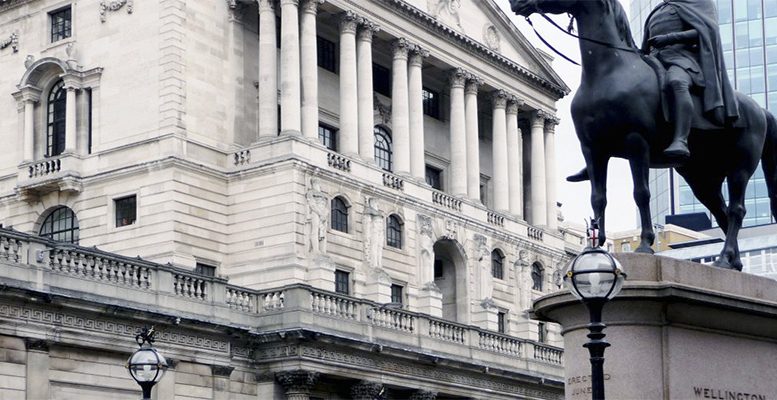Peder Beck-Friis, (Portfolio Manager, Global Macro PIMCO) | BoE will announce its next policy decision on Thursday (noon, UK time). We expect them to leave the policy rate unchanged at 0.1% and to add +100bn of QE purchases. This is in line with market pricing.
Another +100bn of QE purchases. BoE has now completed 70% of its 200bn (+9% of GDP) QE program. Its purchase pace has been fast and steady, more than twice that of the ECB, and total purchases as share of GDP are now approaching those of the Fed. BoE should be done with its current envelope by early July. We expect the BoE to add another +100bn (+5% of GDP) of QE purchases to broadly match the expected fiscal deficit of 13-14% of GDP. Risks are skewed to the upside, doing more than less. After this week’s meeting or after the current envelope is exhausted, the BoE will likely reduce its pace of purchases, like the Fed, spreading out additional purchases over the autumn.
Ongoing review of toolkit. The BoE is currently reviewing its policy toolkit, including the lower bound on policy rates and scope of asset purchases (e.g. HY corporates). This review began at the start of the year, before the virus, and was initially scheduled to conclude by year-end. Recent comments suggest that BoE has accelerated the timeline of this review. While there may be a mention of this review in next week’s minutes, we expect the BoE to present its findings in the August Monetary Policy Report at the earliest, possibly even later during the autumn.
Negative policy rate unlikely. Part of the review is negative interest rates. No MPC member has so far expressed any strong preference for or against negative rates, not ruling them in or out. We think negative rates are unlikely in the baseline, given global central bank skepticism over the policy, limited pass-through from BoE’s recent rate cuts, and the UK banking system’s heavily reliance on deposit funding, constraining many banks from passing on negative rates to their creditors. We believe that negative policy rates would do more harm than good to economies and markets, due to their impact on banks, insurance companies and pension funds, and also a possible adverse effect on consumption.
If they went negative…they would likely go very slowly and communicate it well in advance to allow banks to prepare. There are also no required reserves in the UK, so BoE would possibly have to restructure its framework to allow for tiering. Rather than cutting the main policy rate (Bank Rate, interest on reserves), we think it’s more likely BoE adjusts the lending rate on its targeted lending scheme (TFS, UK’s equivalent to TLTROs). In the most recent TFS(ME) launched in March, banks can borrow from the BoE at the Bank Rate, as long as they lend the funds on to the private sector. This scheme is less generous than ECB’s TLTROs, which offer funding below the ECB’s deposit rate. BoE may loosen these parameters in the future, possibly even lowering the TFS rate to negative, while keeping the Bank Rate in positive territory.
Corporate QE: The BoE has so far bought 5bn of corporate bonds (non-fins issuers with a UK tilt to their business), 50% of its 10bn target. The BoE may add slightly (~5bn) to this envelope next week, as part of the +100bn additional QE purchases. So far, the BoE has not expressed any clear opinions on expanding their list of eligible corporate bonds (e.g. fallen angels). We do not expect any further clarification on this next week.
Looking further ahead…in our baseline, beyond the next meeting, we expect BoE to keep its key policy parameter unchanged over the Cyclical horizon. In a sharper V-shaped recovery, we see no rush for the BoE to tighten policy, unless in the unlikely scenario inflation swiftly recovers back to target. In a L- or W-shaped second wave, we expect the BoE to continue to focus on QE and TFS, closely coordinating its policies with the Treasury. While the likelihood of negative rates would increase, it would still not be our central scenario. Explicit YCC control would also be a possibility, in particular if the Fed introduced such a policy.





